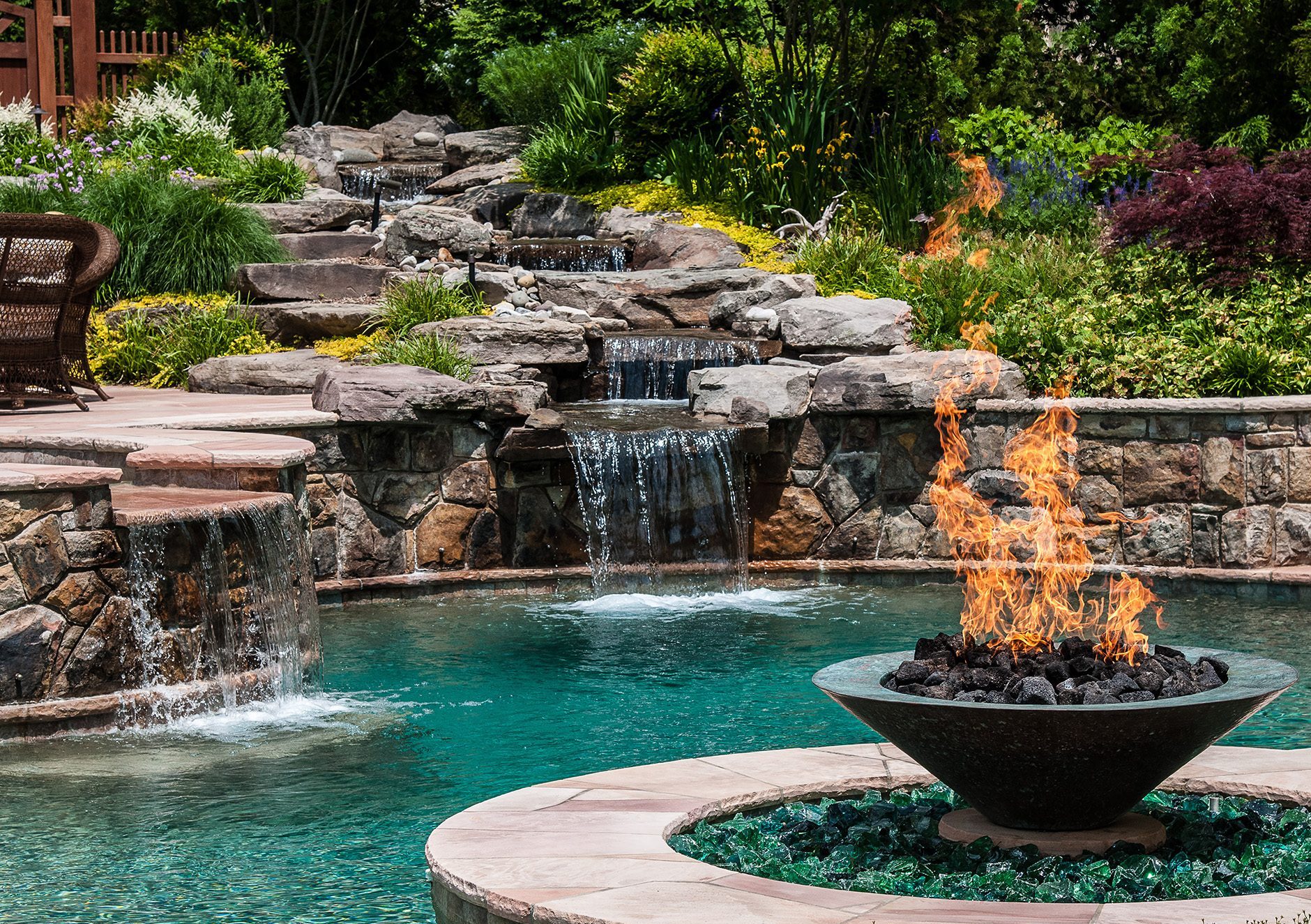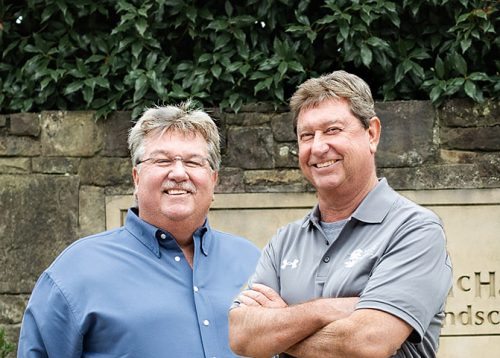- © 2025 Annapolis Home Magazine
- All Rights Reserved

McHale Landscape Design is celebrating 40 years in business. The company began with two brothers, Steve and Kevin McHale, and now has almost 300 employees who serve homeowners throughout Northern Virginia and Maryland, including the Eastern Shore. McHale is known for the beautiful landscapes they design and plant, as well as the walkways, waterfalls, pool houses, and porches they build. Given their influence on the landscape aesthetic of our region, we decided to make McHale the focus of this month’s High-Heeled Gardener column. In the interview that follows, Steve McHale shares the story of how the brothers got started, how the business has grown over the years, and offers tips about the best plants for the mid-Atlantic region. This interview has been edited for conciseness.
Robert Haywood: Congratulations on 40 years. You started at an early age.
Steve McHale: Yes, we did. Our first attempt at entrepreneurship was when we were ten and twelve. Our dad wouldn’t let us have a minibike but did allow us to have a riding lawnmower. So, we started mowing the neighbors’ lawns for $3.50 per lawn. We also made a deal with our buddies. If we cut trails for them in the meadows surrounding our neighborhood, they would let us ride their minibikes. So, we learned to barter early in our career.
My brother Kevin and I started our current company right out of college. Kevin started a couple of years before I graduated with my degree in landscape architecture. We both went to WVU. After he graduated, he would find a planting job, take pictures of the site, mail Kodak or Polaroid photos to me at WVU and say, “Here’s what I’m thinking….” I’d make a little sketch and then send it back to him. He’d present it to the client, and then, on weekends, maybe I’d come home, or he’d get some guys from our neighborhood and do the job.
Haywood: Because you started out small and you’ve grown and grown, I’m sure there have been many ups and downs along the way. Some businesses try to grow, and they fail. What’s allowed you to grow over all these years?
McHale: We definitely have had our share of luck and good timing and some breaks along the way that allowed us to grow. Most of that growth came from opportunities from the relationships that we have built through the years and continue to build. We’ve always remembered not to become complacent. We never think that we have it made, and we still don’t.
[Our growth] is without a doubt due to the people that work with us every day. Note that I didn’t say work for us. Just looking at our field guys, we have some foremen that have been with us for over 25 years. They have learned to live the American dream and have had the opportunity to do so.
Haywood: I’m wondering what is the dynamic between you and your brother that keeps you together and working productively?
McHale: For one thing, we both have very different roles now. My brother focuses more on the business and operations side, and I focus on the design and construction and implement the sales side. We have trust with each other.
There was a day when we could have an argument, and then five minutes later, we could go have lunch together. I think that’s something that is pretty special about being brothers. We can get over things quickly because, in the end, we do trust each other and love each other. That’s what holds it together, I think.
Haywood: When you go visit a residential landscape, your own or others’, what are some of the qualities that make something exceptional to you?
McHale: Well, from the design standpoint, I think simplicity is the key. It’s very easy to over-design and end up with a busy plan, especially in residential. When we go to a property, we don’t look at just the landscape; we look at the landscape, the house, and the surroundings together. It’s all dependent on the architecture, which is what we want to complement, while also meeting the needs of the client, with the elements that they want to include.
Haywood: There’s a lot of different landscape companies and landscape styles and philosophies. Is there something that you could point to as a McHale Landscape aesthetic that runs through your work? Or, if not, is it just each designer doing his own thing?
McHale: I would say that our signature style of masonry has always distinguished us from others. I will tell you, early on, when Kevin and I started including masonry into projects, we were not qualified. So, we hired some old-world masons, and we were the labor for them. We would watch them build stone walls and whatever masonry it might have been. So, we learned from them how to lay stone in that old-world style, which you don’t see very often anymore; instead, you have a lot of thin veneer stuff. So, after we learned how to do it ourselves, then we hired masons, and they understood that we knew how to do it, so the standards were
very high.
Moreover, I think it’s really our design/build approach that sets high standards for every detail of the project, from the threshold of the door out to the entire property. It makes a difference for people to know that they only have to talk to one person and that one person really does know what’s going on with the entire project.
Haywood: What are some of your favorite plants and trees to grow in Maryland?
McHale: This is not really a joke, but the real answer that Kevin and I both agree on is this—plants that live. When I say those that live, it’s because we’re in the mid-Atlantic area. We’re not south or north. There are some plants we can get away with over on the Eastern Shore, where it’s a little warmer, but in Northern Virginia, you don’t have a chance of having certain plants live. You must be careful with what you’re putting in the ground and where you’re putting it.
Here’s a couple of names of some plants. If I’m planting one perennial, it would be Nepeta, which is a type of catnip. I use it because it’s very durable, it’s drought-tolerant, and it has a long blooming period with a nice light blue flower. And the deer don’t eat it.
So that’s a perennial. If I’m looking for a good shrub, it’s Osmanthus. I like it because it will grow almost anywhere, it’s evergreen, like a holly, and it has a real strong fragrant flower in early October. It’s one of the sweetest fragrances that you’ll ever smell, and it’s a pleasant surprise, especially in October. We use it as a hedgerow, we use it as screen plantings, we use it as a specimen, and we use a lot of them.
If I’m planting a tree, I like a redbud more than any other native plant. It naturally grows on the edge of the woods. It starts the spring off with lavender flowers all along the branches, mixing in with the dogwoods blooming right after them. It’s also very durable.
We always challenge our designers to use plants that are readily available and that thrive. We don’t need to take unnecessary risks with questionable plants if we have a great design.
Thanks to Julie Patronik for her help with this story.
McHale Landscape Design: mchalelandscape.com

Kevin and Steve McHale, McHale Landscape Design
© Annapolis Home Magazine
Vol. 13, No. 2 2022